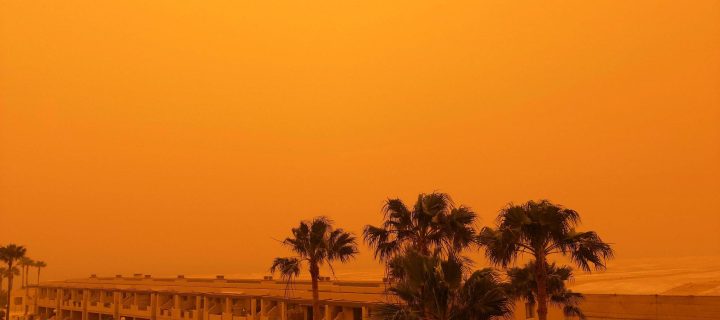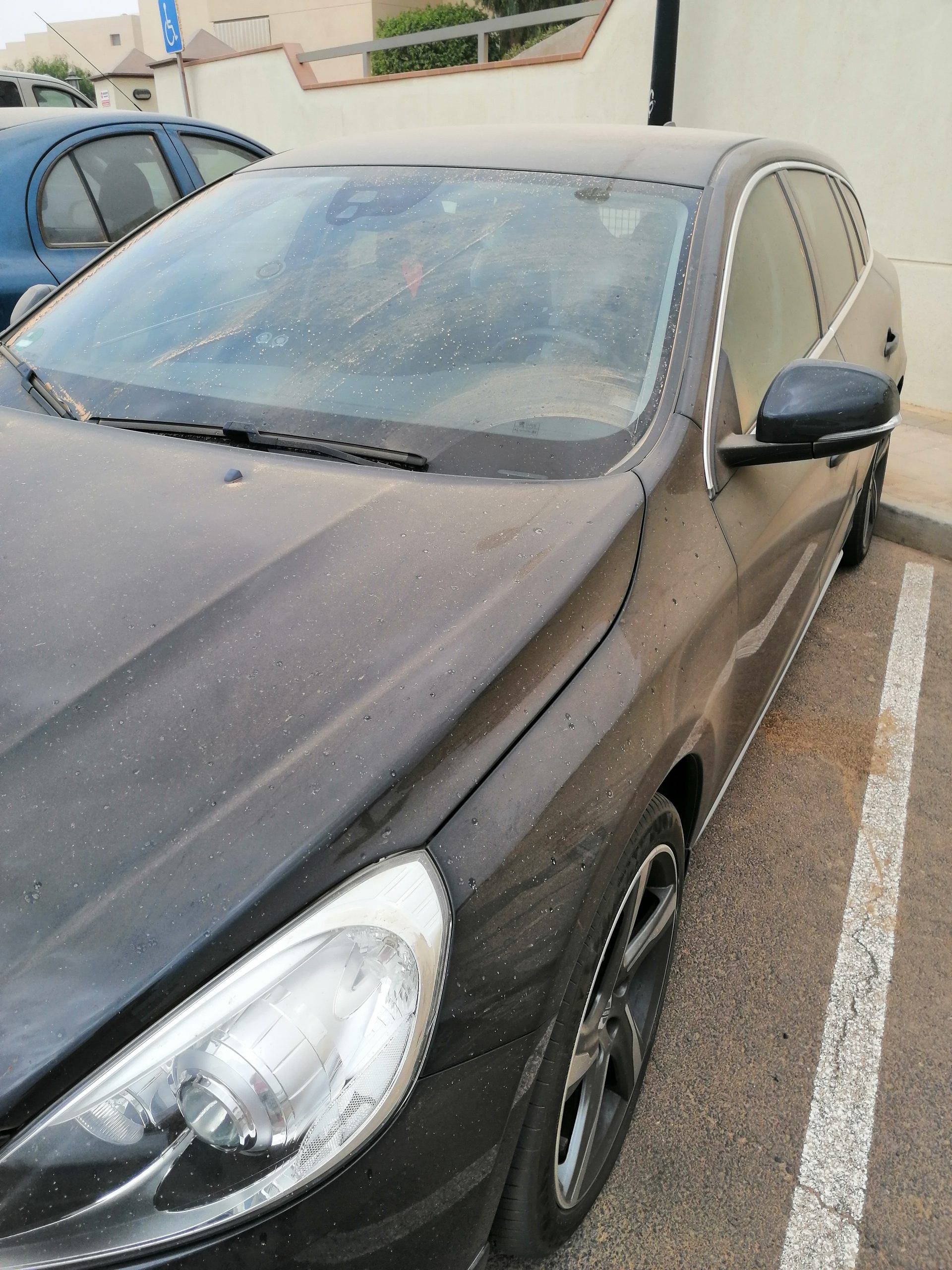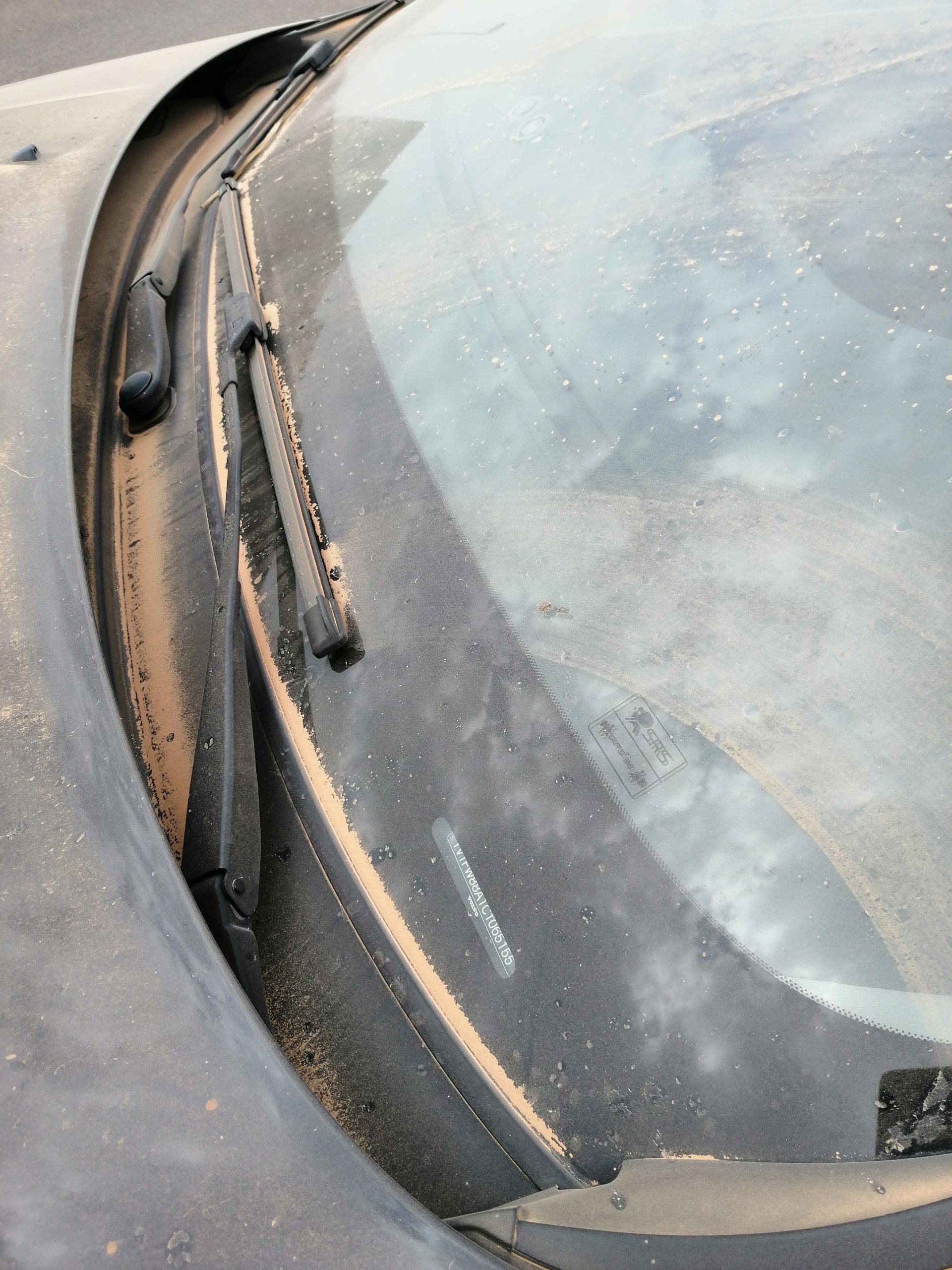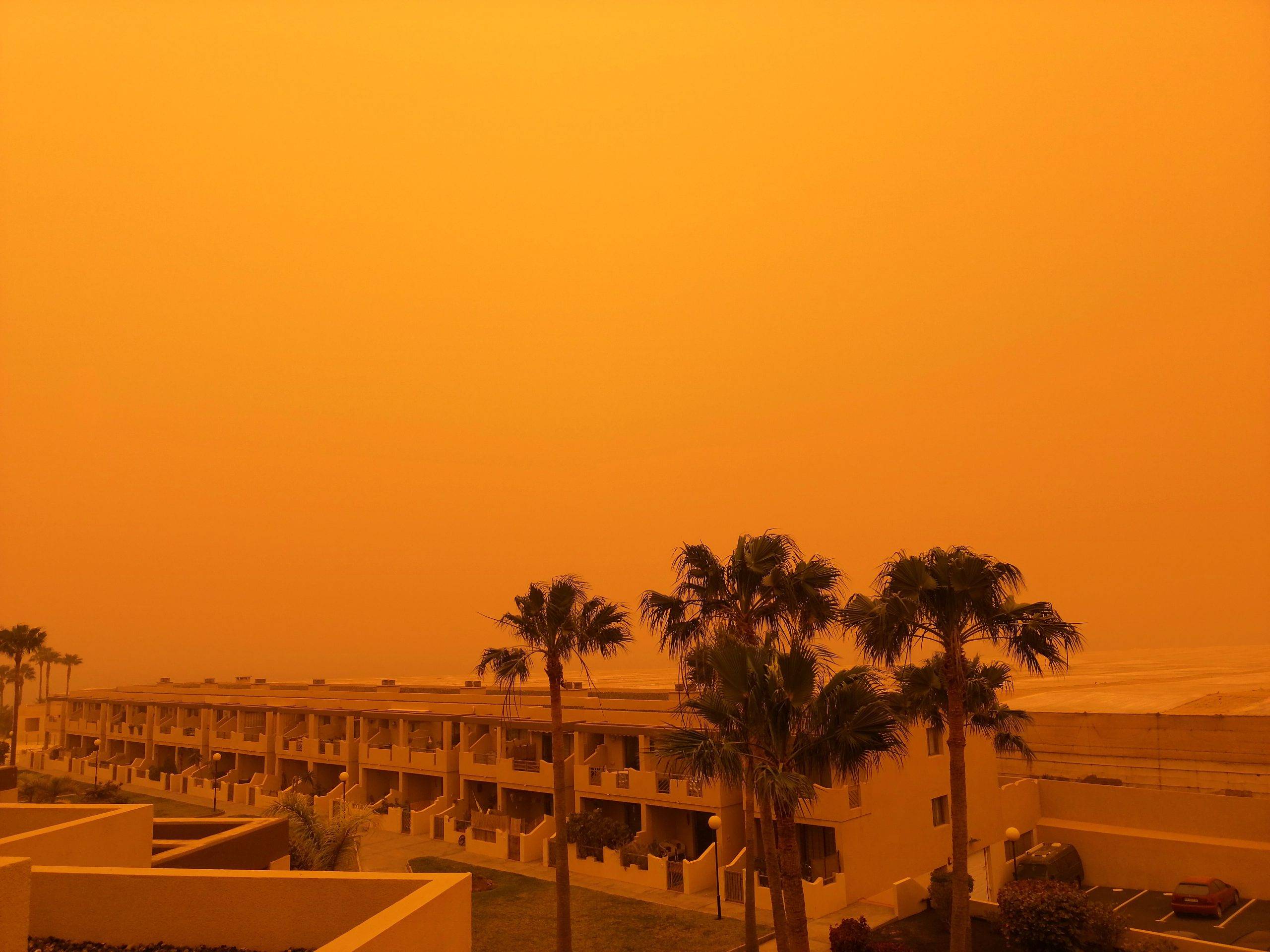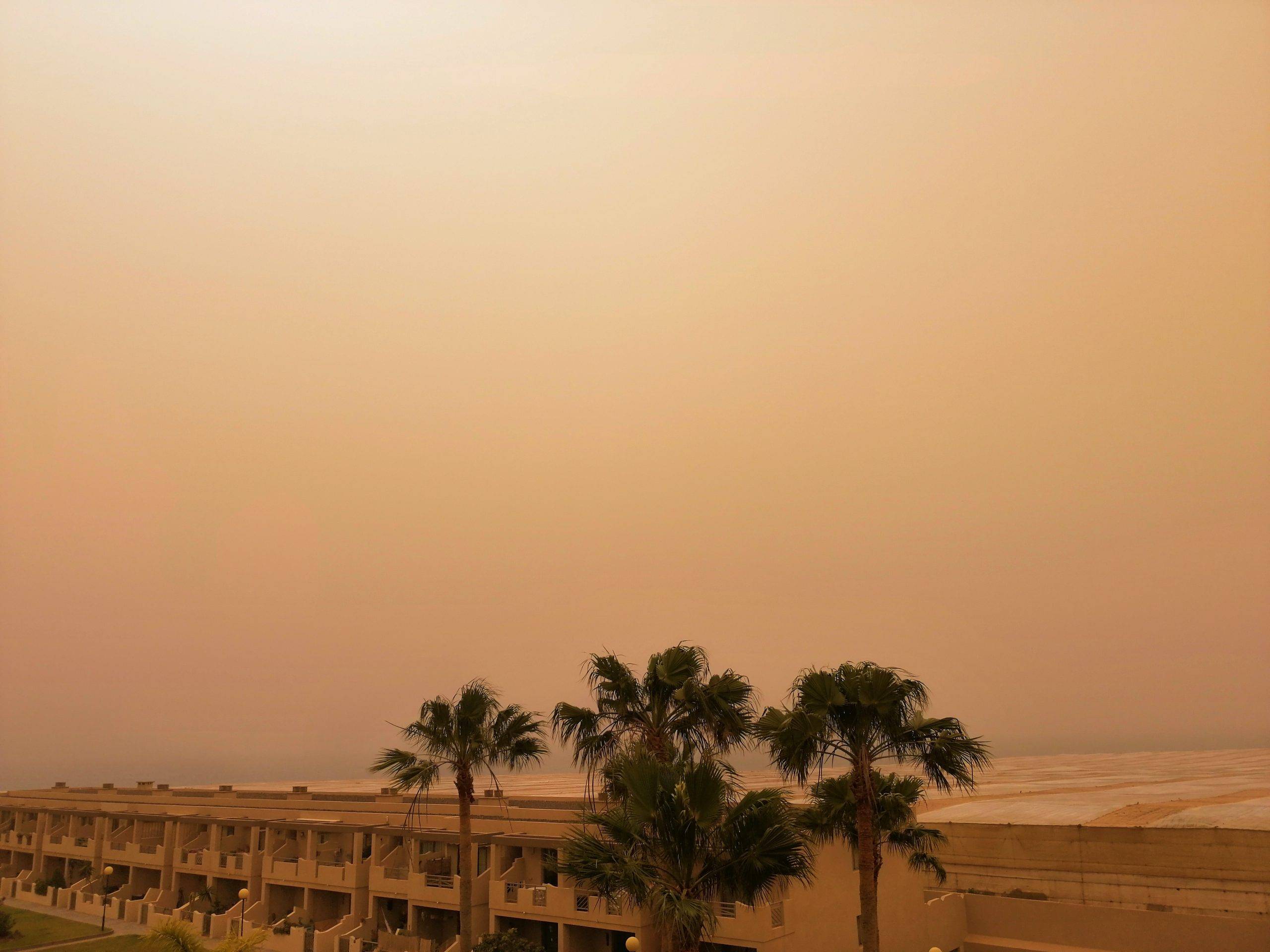“Travel 4 Kids ® shares with you useful tips and information on places to visit with children in the Canary Islands. If you are travelling in Tenerife, you can find attractions on the Tenerife Attractions Map from Travel 4 Kids®.
Sandstorms in the Canary Islands, known as Calima, are a meteorological phenomenon in which strong winds from the Sahara Desert carry particles of sand and dust across the Atlantic Ocean to the Canary Islands, sometimes reaching the mainland.
Calima in Canary Islands – what are they and how do I recognise them?
One of the clearest signs of a calima is a sudden drop in visibility. Dust in the air can cause haze or fog, making the sky look hazy or yellowish-pink.
The sky may take on a yellow, orange or pinkish colors, which is unusual for normal meteorological conditions.
Sometimes calima can also cause an increase in temperature, as the dust layer acts as a catalyst for the greenhouse effect.
You will notice fine dust particles accumulating on cars, windows, outdoor furniture and other surfaces. You can also feel the presence of dust in the air, especially when breathing.
Calima – what are the effects for health?
- Respiratory problems: people with asthma, chronic obstructive pulmonary disease or other respiratory diseases are more vulnerable during calima. High levels of dust in the air can lead to an exacerbation of symptoms including shortness of breath, coughing and difficulty breathing.
- Allergic reactions: dust can carry allergens that cause or aggravate allergic reactions such as rhinitis, red eyes, itching or skin rashes.
- Headaches and general weakness.
- Occasional nausea. During Kalima, there is sometimes a flare-up of intestinal viruses (rotavirus, norovirus, etc.).
- General effects for health: the high temperatures and dry air that calima brings can cause additional stress on the body, increasing the risk of dehydration and causing general fatigue.
Although the health effects of calima are mostly temporary and disappear after the dust level in the air has decreased, it is important to take precautions to avoid more serious health problems. Persons with pre-existing medical conditions are advised to consult a physician for additional safety precautions. And if you experience adverse effects, medical assistance and health services in Tenerife are available.
Calima in Canary Islands – recommendations
Although calima can cause inconvenience and temporarily worsen living conditions, it is generally not directly dangerous for most people. However, people with respiratory diseases or allergies should take extra precautions. Health professionals recommend wearing protective masks and avoiding prolonged exposure to the outdoors during periods of calima.
To minimise exposure to calima, it is important to monitor local air quality reports and follow the recommendations of health professionals.
It is recommended:
- Avoid prolonged exposure to the outdoors and do not engage in active sporting activities – especially for people with respiratory problems or allergies.
- Wearing protective masks can help protect the respiratory system from dust.
- Close windows and doors to reduce the amount of dust indoors.
- Use air purifiers.
- Drink more water, avoid exercise in the heat and follow a healthy lifestyle.
- Follow air quality reports. This will help you to better plan your daily activities and reduce potential health impacts.
- Go to forests and national parks (in Tenerife: Anaga, Masca, Teide) and reacreation sites instead of the water to reduce dust and breathe fresh air.
- Go to museums – spend more time indoors.
Sandstorms in the Canary Islands – when are they more frequent?
Calima is more common in the Canary Islands during the winter and spring months, mainly between December and March. During this time, periodic changes in air currents from the Sahara Desert towards the Canary Islands carry sand and dust particles across the Atlantic Ocean.
Nevertheless, calima can occur at any time, depending on specific atmospheric conditions and wind directions, but are more frequent in the winter and early spring months.
Although sandstorms are a common occurrence in the Canary Islands, they usually last only a few days. If you are on holiday in the Canary Islands and you are hit by a calima, don’t be alarmed. They are usually not very intense and do not harm healthy people. There is certainly no need to cancel your trips, especially as you will not know in advance when the calima will “arrive”, and if the wind direction changes, it may not arrive at all, or it may only reach a small part of the Canary Islands, and then only in a weakened condition.

